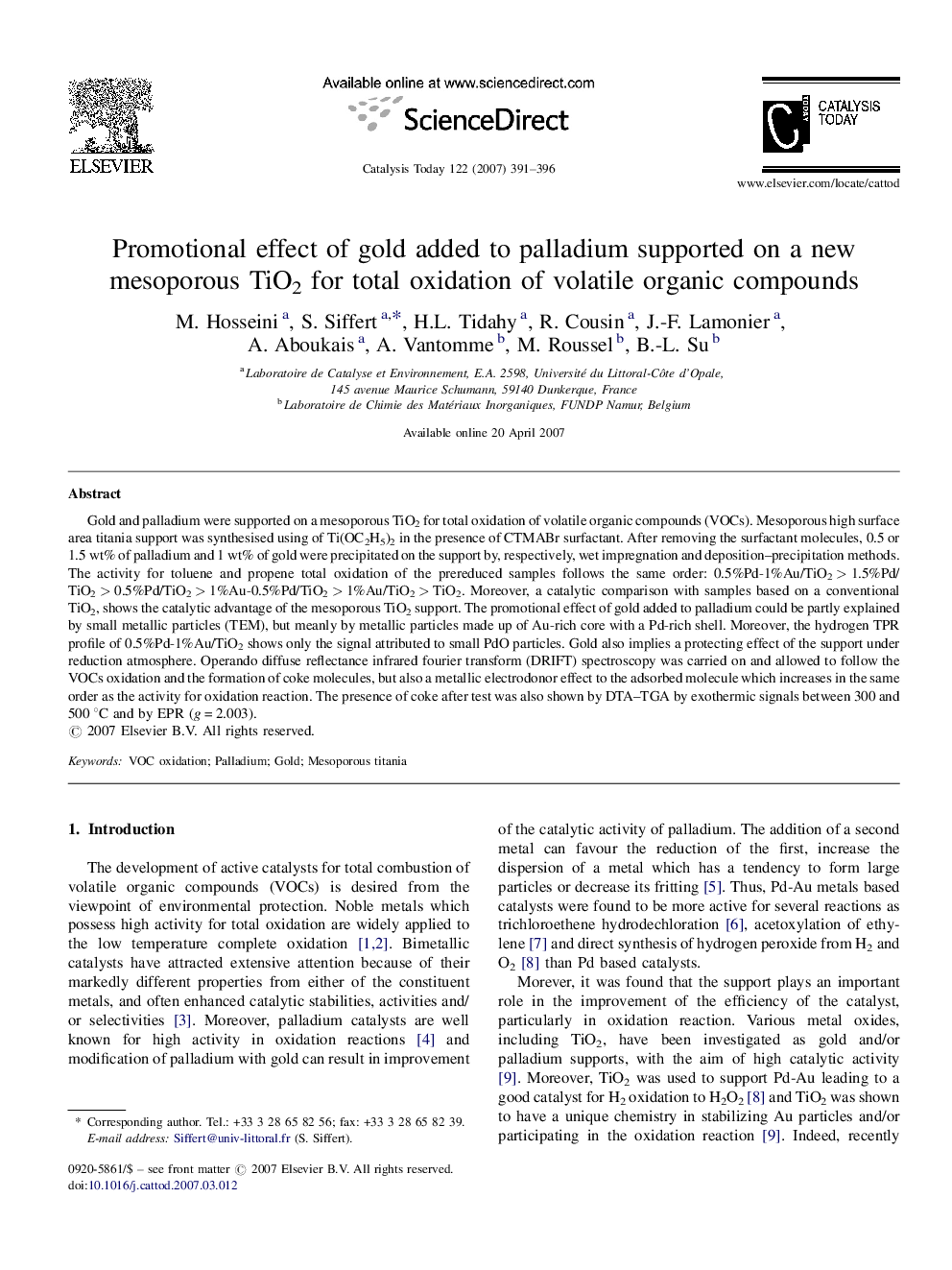| Article ID | Journal | Published Year | Pages | File Type |
|---|---|---|---|---|
| 58418 | Catalysis Today | 2007 | 6 Pages |
Gold and palladium were supported on a mesoporous TiO2 for total oxidation of volatile organic compounds (VOCs). Mesoporous high surface area titania support was synthesised using of Ti(OC2H5)2 in the presence of CTMABr surfactant. After removing the surfactant molecules, 0.5 or 1.5 wt% of palladium and 1 wt% of gold were precipitated on the support by, respectively, wet impregnation and deposition–precipitation methods. The activity for toluene and propene total oxidation of the prereduced samples follows the same order: 0.5%Pd-1%Au/TiO2 > 1.5%Pd/TiO2 > 0.5%Pd/TiO2 > 1%Au-0.5%Pd/TiO2 > 1%Au/TiO2 > TiO2. Moreover, a catalytic comparison with samples based on a conventional TiO2, shows the catalytic advantage of the mesoporous TiO2 support. The promotional effect of gold added to palladium could be partly explained by small metallic particles (TEM), but meanly by metallic particles made up of Au-rich core with a Pd-rich shell. Moreover, the hydrogen TPR profile of 0.5%Pd-1%Au/TiO2 shows only the signal attributed to small PdO particles. Gold also implies a protecting effect of the support under reduction atmosphere. Operando diffuse reflectance infrared fourier transform (DRIFT) spectroscopy was carried on and allowed to follow the VOCs oxidation and the formation of coke molecules, but also a metallic electrodonor effect to the adsorbed molecule which increases in the same order as the activity for oxidation reaction. The presence of coke after test was also shown by DTA–TGA by exothermic signals between 300 and 500 °C and by EPR (g = 2.003).
